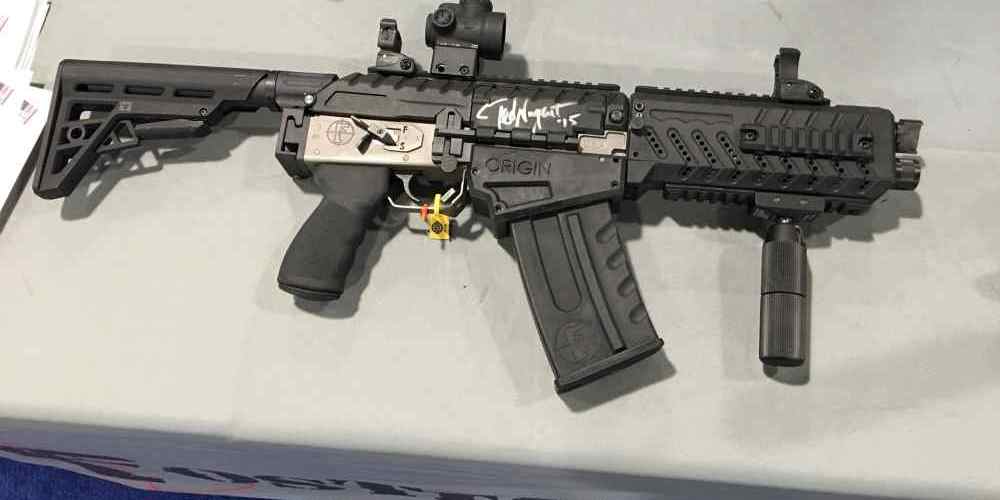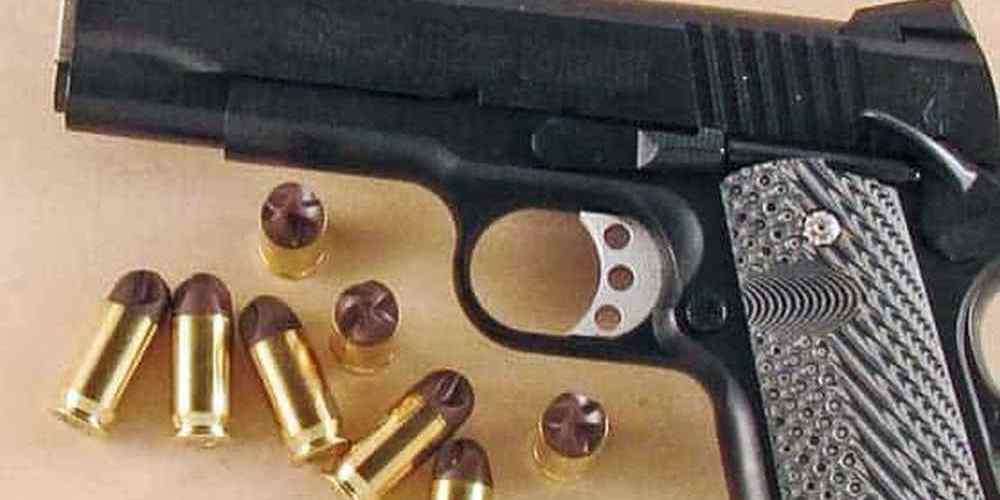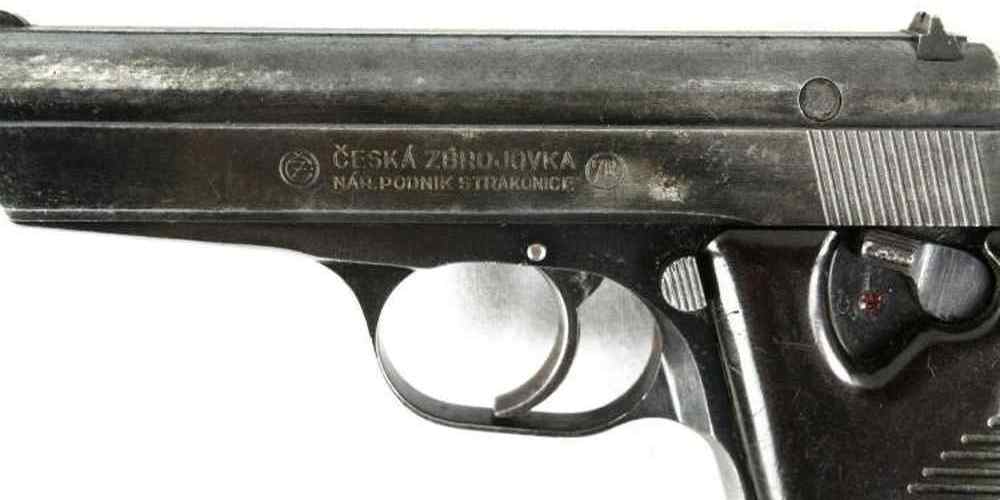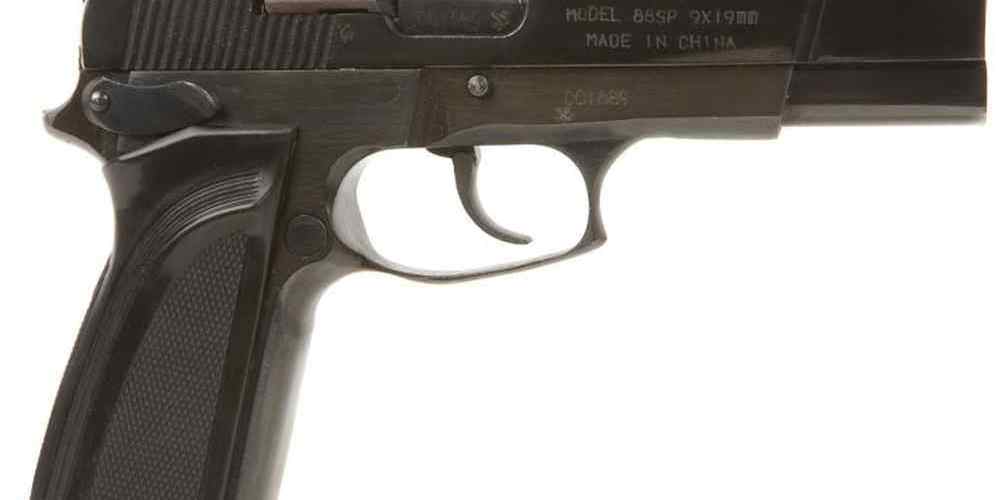“Restoring strength and precision to your semi-auto pistol frames.”
Identifying Common Cracks and Damage in Semi-Auto Pistol Frames
Semi-automatic pistols are popular firearms for both recreational shooting and self-defense. However, like any mechanical device, they can suffer from wear and tear over time. One common issue that owners may encounter is cracks or damage in the frame of the pistol. These issues can affect the performance and safety of the firearm, so it’s important to address them promptly. One of the most common types of damage that can occur in a semi-auto pistol frame is a crack. Cracks can develop in various areas of the frame, including around the trigger guard, the grip, or the slide rails. These cracks can be caused by a variety of factors, such as overuse, improper maintenance, or even manufacturing defects. It’s important to inspect your pistol regularly for any signs of cracking, as a cracked frame can compromise the structural integrity of the firearm and potentially lead to catastrophic failure. Another common type of damage that can occur in a semi-auto pistol frame is wear and tear. Over time, the repeated cycling of the slide can cause the frame to become worn down or damaged. This can manifest as scratches, dents, or even deformation of the frame itself. While some wear and tear is normal, excessive damage can affect the functionality of the pistol and should be addressed promptly. If you notice any cracks or damage in your semi-auto pistol frame, it’s important to take action to repair it. Ignoring the issue can lead to further damage and potentially render the firearm unsafe to use. Fortunately, many types of frame damage can be repaired by a skilled gunsmith. When it comes to repairing cracks in a semi-auto pistol frame, there are a few different methods that can be used. One common technique is to weld the crack closed using a process known as TIG welding. This involves using a specialized welding machine to fuse the metal back together, effectively repairing the crack. Another option is to use epoxy or other adhesives to fill in the crack and reinforce the damaged area. Both of these methods can be effective in repairing cracks in a pistol frame, but it’s important to consult with a professional gunsmith to determine the best course of action for your specific firearm. In addition to repairing cracks, gunsmiths can also address wear and tear damage in a semi-auto pistol frame. This may involve refinishing the frame to remove scratches and dents, or even replacing damaged components altogether. By addressing wear and tear damage promptly, you can ensure that your pistol remains in good working condition and safe to use. In conclusion, cracks and damage in a semi-auto pistol frame are common issues that can affect the performance and safety of the firearm. It’s important to inspect your pistol regularly for any signs of damage and address any issues promptly. By working with a skilled gunsmith, you can repair cracks and damage in your pistol frame and ensure that your firearm remains in good working condition for years to come.
Step-by-Step Guide to Repairing Cracks in Semi-Auto Pistol Frames
If you own a semi-auto pistol, you know how important it is to keep it in top condition. One common issue that can arise with these firearms is cracks or damage in the frame. While this may seem like a daunting problem, with the right tools and know-how, you can easily repair these issues yourself. In this step-by-step guide, we will walk you through the process of fixing cracks and damage in semi-auto pistol frames. The first step in repairing a cracked frame is to assess the damage. Carefully inspect the frame for any cracks or signs of wear. It is important to identify the extent of the damage before proceeding with any repairs. Once you have identified the cracks, you will need to gather the necessary tools and materials for the repair. To repair a cracked frame, you will need a few key items. These include a heat gun, a welding rod, a file, sandpaper, and a vice. You may also need a metal epoxy or welding machine, depending on the severity of the damage. Once you have gathered all of the necessary tools and materials, you can begin the repair process. The first step in repairing a cracked frame is to heat the area around the crack with a heat gun. This will help to soften the metal and make it easier to work with. Once the metal is heated, you can begin to weld the crack using a welding rod. Be sure to work slowly and carefully, ensuring that the crack is fully sealed. After welding the crack, you will need to file down any excess metal to smooth out the repair. Use a file to carefully remove any rough edges or bumps from the welded area. Once the repair is smooth, you can use sandpaper to further refine the surface. If the crack is too severe to be repaired with welding, you may need to use a metal epoxy to fill in the damaged area. Simply apply the epoxy to the crack and smooth it out with a putty knife. Allow the epoxy to dry according to the manufacturer’s instructions before sanding it down to a smooth finish. Once the repair is complete, you can use a vice to secure the frame while you test its strength. Apply pressure to the repaired area to ensure that the crack is fully sealed and the frame is structurally sound. If the repair holds up under pressure, you can consider the job done. In conclusion, repairing cracks and damage in semi-auto pistol frames is a manageable task with the right tools and know-how. By following this step-by-step guide, you can easily fix cracks in your pistol frame and keep your firearm in top condition. Remember to always prioritize safety when working with firearms and consult a professional gunsmith if you are unsure about any aspect of the repair process. With a little patience and attention to detail, you can successfully repair cracks in semi-auto pistol frames and enjoy your firearm for years to come.
Tools and Materials Needed for Frame Repairs on Semi-Auto Pistols
When it comes to maintaining your semi-auto pistol, one of the most important aspects to consider is the frame. The frame is the backbone of your firearm, providing stability and support for all the other components. Over time, frames can develop cracks or other damage that can compromise the safety and functionality of your pistol. Fortunately, with the right tools and materials, you can easily repair these issues and keep your firearm in top condition. Before you begin any frame repairs on your semi-auto pistol, it’s important to gather all the necessary tools and materials. Having the right equipment on hand will make the process much smoother and ensure that you can complete the repairs effectively. Here are some of the essential tools and materials you’ll need for frame repairs on semi-auto pistols:
1. Epoxy or Welding Equipment: Depending on the type of damage to your pistol frame, you may need either epoxy or welding equipment to make the necessary repairs. Epoxy is a great option for filling in cracks or small holes, while welding equipment is better suited for more extensive damage. 2. Sandpaper: Sandpaper is essential for smoothing out any rough edges or surfaces on the frame before and after making repairs. This will help ensure a clean and professional finish. 3. Cleaning Supplies: Before you begin any repairs, it’s important to thoroughly clean the frame of your pistol to remove any dirt, grease, or debris that could interfere with the repair process. A good degreaser and some clean rags should do the trick. 4. Safety Gear: Whenever you’re working on firearms, it’s crucial to prioritize safety. Make sure you have safety glasses, gloves, and any other necessary protective gear to keep yourself safe during the repair process. 5. Heat Source: If you’re using welding equipment for your frame repairs, you’ll need a reliable heat source to melt the metal and make the necessary repairs. A propane torch or soldering iron should work well for this purpose. Once you have all the necessary tools and materials gathered, you can begin the process of repairing your semi-auto pistol frame. Start by thoroughly cleaning the frame to remove any dirt or debris that could interfere with the repair process. Use a degreaser and some clean rags to ensure that the surface is clean and ready for repairs. Next, assess the damage to your pistol frame and determine the best course of action. If you’re dealing with small cracks or holes, epoxy may be the best option for making repairs. Mix the epoxy according to the manufacturer’s instructions and carefully apply it to the damaged areas of the frame. Use a putty knife or similar tool to smooth out the epoxy and ensure a clean finish. If the damage to your pistol frame is more extensive, you may need to use welding equipment to make the necessary repairs. This process can be more complex and should only be attempted by those with experience in welding. Use a propane torch or soldering iron to heat the metal and make the necessary repairs, being careful to follow all safety precautions. Once you’ve made the necessary repairs to your pistol frame, use sandpaper to smooth out any rough edges or surfaces and ensure a clean finish. Clean the frame once again to remove any debris from the repair process, and your semi-auto pistol should be ready to go. By following these steps and using the right tools and materials, you can easily repair cracks and damage in your semi-auto pistol frame and keep your firearm in top condition. Remember to prioritize safety throughout the repair process and take your time to ensure that the repairs are done correctly. With a little effort and the right equipment, you can keep your pistol in top shape for years to come.
Tips for Preventing Future Damage to Semi-Auto Pistol Frames
Semi-automatic pistols are popular firearms for both recreational shooting and self-defense. However, like any mechanical device, they can experience wear and tear over time. One common issue that owners may encounter is damage to the frame of the pistol. This can be caused by a variety of factors, such as improper handling, excessive use, or even manufacturing defects. Fortunately, many frame repairs can be done at home with the right tools and know-how. One of the most common types of damage that can occur to a semi-auto pistol frame is cracking. Cracks can develop in the frame due to stress from firing the gun, dropping it, or even just general wear and tear. If left unchecked, these cracks can compromise the structural integrity of the frame and potentially lead to catastrophic failure. To repair a cracked frame, the first step is to thoroughly clean the area around the crack to remove any dirt or debris. Next, apply a small amount of epoxy or super glue to the crack and press the two sides together firmly. Allow the adhesive to dry completely before testing the pistol to ensure that the repair is secure. In addition to cracks, semi-auto pistol frames can also suffer from other types of damage, such as dents or scratches. While these may not affect the functionality of the firearm, they can detract from its appearance and potentially lead to further damage if left untreated. To repair dents in a pistol frame, use a small hammer or mallet to gently tap the dent back into place. Be sure to work slowly and carefully to avoid causing any additional damage. For scratches, consider using a touch-up pen or paint to fill in the damaged area and restore the finish of the frame. While it is possible to repair damage to a semi-auto pistol frame, prevention is always the best course of action. There are several steps that owners can take to help prevent future damage to their firearm. First and foremost, always handle the pistol with care and respect. Avoid dropping or mishandling the firearm, as this can cause unnecessary stress on the frame and lead to damage over time. Additionally, be sure to clean and maintain the pistol regularly to prevent dirt and debris from accumulating and causing wear on the frame. Another important tip for preventing damage to a semi-auto pistol frame is to use high-quality ammunition. Low-quality or improperly loaded ammunition can cause excessive pressure on the frame and potentially lead to cracks or other damage. Always use ammunition that is recommended by the manufacturer of the firearm and inspect each round before loading it into the magazine. Finally, consider investing in a quality holster to protect the pistol when it is not in use. A good holster will help prevent scratches and dents from forming on the frame and provide an extra layer of protection against accidental damage. By taking these simple steps, owners can help ensure that their semi-auto pistol remains in top condition for years to come. In conclusion, frame repairs for semi-auto pistol frames are a common issue that many owners may encounter. By following the tips outlined in this article, owners can learn how to repair cracks and other damage to their firearm’s frame and prevent future damage from occurring. With proper care and maintenance, a semi-auto pistol can provide years of reliable service and enjoyment for its owner.
Professional vs. DIY Frame Repairs for Semi-Auto Pistols
When it comes to semi-auto pistols, the frame is a critical component that houses the firing mechanism and provides structural support for the entire firearm. Over time, frames can develop cracks or other damage due to wear and tear, improper maintenance, or even accidental mishandling. When faced with a damaged frame, gun owners are often left wondering whether they should attempt to repair it themselves or seek out professional help. DIY frame repairs can be a tempting option for those who are handy with tools and enjoy working on their firearms. However, it’s important to remember that the frame is a complex and crucial part of the pistol, and any mistakes made during the repair process could compromise the safety and functionality of the firearm. Professional gunsmiths have the knowledge, experience, and specialized tools needed to properly assess and repair frame damage, ensuring that the pistol remains safe and reliable. One of the most common types of frame damage in semi-auto pistols is cracking. Cracks can occur due to a variety of factors, including stress from repeated firing, improper ammunition, or even manufacturing defects. While some cracks may be superficial and pose no immediate threat to the pistol’s performance, others can compromise the structural integrity of the frame and lead to catastrophic failure. Professional gunsmiths are trained to identify the severity of frame cracks and determine the best course of action for repair. In some cases, minor cracks can be welded or filled with epoxy to prevent further damage. However, more serious cracks may require the frame to be replaced entirely, which is a delicate and precise process that should only be performed by a skilled professional. In addition to cracking, frames can also suffer from other types of damage, such as dents, gouges, or warping. These issues can affect the pistol’s accuracy, reliability, and overall performance. While some minor damage may be able to be repaired by a knowledgeable DIY enthusiast, more extensive damage should be left to the experts. Professional gunsmiths have access to a wide range of tools and materials specifically designed for frame repairs, allowing them to restore damaged frames to their original condition. They can also perform thorough inspections to identify any underlying issues that may have contributed to the damage, ensuring that the pistol is safe to use once the repairs are complete. Ultimately, the decision to repair a damaged frame yourself or seek out professional help will depend on your level of expertise, the extent of the damage, and your comfort level with firearms maintenance. While DIY repairs can be a rewarding and cost-effective option for some gun owners, it’s important to remember that the frame is a critical component of the pistol and should be treated with care and respect. If you’re unsure about how to proceed with frame repairs for your semi-auto pistol, don’t hesitate to reach out to a professional gunsmith for guidance. They can provide expert advice and assistance to ensure that your firearm remains safe, reliable, and in top working condition for years to come.







